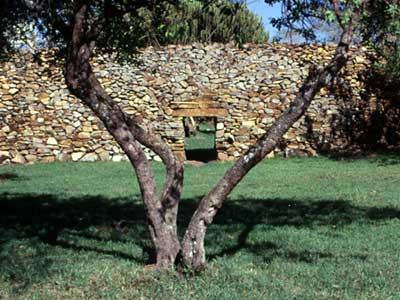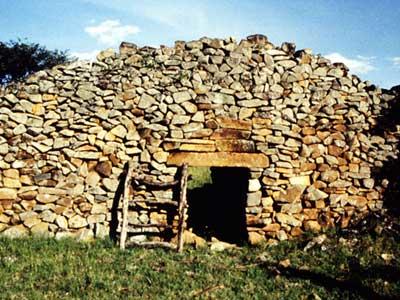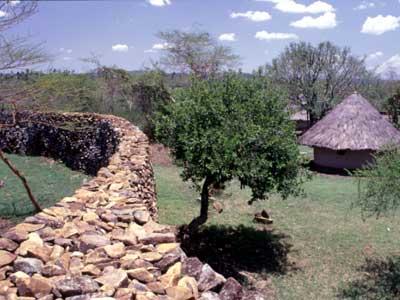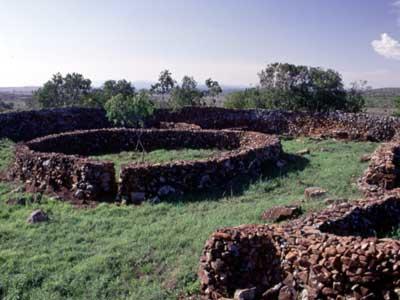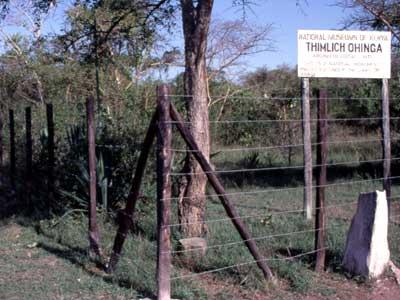Built in the 14th century on a hill, Thimlich Ohinga is a complex surrounded by stone walls now partially covered under Savannah bush land. The site consists of six enclosures and is a rare example of the first settlements in the region. Its stone wall is unique; it appears not to have had mortar applied originally and ranges from 1.2-4.2 meters in height and 1-3 meters in width. The walls surround the remnants of the once bustling urban center, now marked only by a series of house pits and cattle enclosures. Although designated a national monument in 1981, several portions of the wall fell into disrepair. The main enclosure, for example, which measures about 140 meters diameter, lost several of its parts. Although all but one gate was blocked, the entire site was vulnerable to vandalism and trespassing.
2000 and 2002 World Monuments Watch
After the inclusion of Thimlich Ohinga on the 2000 Watch, the site was selected to receive funding from American Express, enabling the completion of a conditions survey and photographic documentation of the site. General landscaping was done to remove much of the accumulated brush and a fence was built to regulate visitors to the site. Many portions of the massive wall were also restored. In addition, the project explored and documented the cultural values of the site and encouraged the interpretation and public dissemination of the history and evolution of the site to demonstrate its continuing connection to the community and to inform the public and visitors of the importance of the site. The conservation project was completed in two years.
Thimlich Ohinga is a rare, early example of defensive savanna architecture that led to this type of design becoming a traditional style across East Africa. It is a specimen of the stone walling practices and a communal, centralized system of control, which became prevalent in the Lake Victoria region of Kenya. Built as a fortified village, Thimlich Ohinga served defensive, economic, religious, and social functions. Archaeological research has discovered much about the urban structure and manufacturing of goods conducted within the community. As a former urban hub, many surrounding communities claim to have a connection to the history of Thimlich Ohinga, thus amplifying its local cultural importance.

